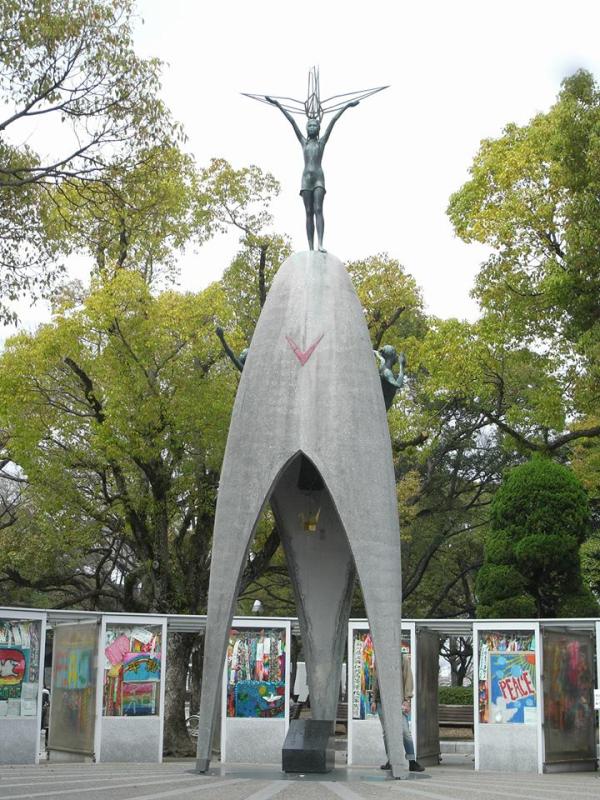
Peace Module Summer Morning.
Peace Module Summer Morning.
08:16 local time on 6 August, 1945. I can imagine people going to work, children walking with their parents to kindergarten and schools and STOP.. Like in movie. But that was nightmare in reality. Scientists said that grass and trees will not grow there for more than 70 years. Can you imagine the place and people, where even grass cannot survive?
Hiroshima and Nagasaki. We had a chance to visit Hiroshima this morning. If you will ask about my impression it will be difficult to express all feelings in any language I know. That is not just a place where more than 200 000 people lost their life. That's greatest warning and lessons to all generations of human being.
One of the most touching stories which I’ve heard before arrival to Japan was about Sadako. She was just two years old when the atomic bomb was dropped on Hiroshima. She was in two kilometers away from where the bomb exploded. One day Sadako became so dizzy that she fell down and couldn’t get up. Her school-mates informed the teacher. Later Sadako’s parents took her to the Red Cross Hospital to see what was wrong with her. Sadako found out that she had leukemia, a kind of blood cancer. Nobody could believe it. Shortly thereafter, her best friend, Chizuko, came to visit her. Chizuko brought some origami (folding paper). She told Sadako of a legend. She explained that the crane, a sacred bird in Japan, lives for a hundred years, and if a sick person folds 1,000 paper cranes, then that person would soon get well. After hearing the legend, Sadako decided to fold 1,000 cranes in the hope that she would get well again. Sadako kept folding cranes even though she was in great pain. Even during these times of great pain she tried to be cheerful and hopeful. Not long afterwards, with her family standing by her bed, Sadako went to sleep peacefully, never to wake up again. She had folded a total of 644 paper cranes. Everyone was very sad. Thirty-nine of Sadako's classmates felt saddened by the loss of their close friend and decided to form a paper crane club to honor her. Word spread quickly. Students from 3,100 schools and from 9 foreign countries gave money to the cause.
On May 5, 1958, almost 3 years after Sadako had died, enough money was collected to build a monument in her honor. It is now known as the Children's Peace Monument, and is located in the center of Hiroshima Peace Park, close to the spot where the atomic bomb was dropped. Children from all over the world still send folded paper cranes to be placed beneath Sadako’s statue. In so doing, they make the same wish which is engraved on the base of the statue: This is our cry, This is our prayer, Peace in the world".
One of the greatest side of World Scout Jamboree is a chance to know numbers of nations, people, to achieve about their history, tragedies. And, of course, to lesson from all you've seen. So, what I've realized from today's experience is we all must cooperate all together for better and more safe World. I strongly believe - we must do our best for peaceful World for future generations.
I sincerely believe we can.
#wsj2015 #aspiritofunity #wa